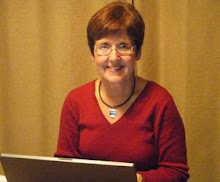
"Studies have shown that the quality and type of lighting can have a significant impact in our health and comfort", explains research Edith Maier in Austria.
She is part of a European research team, the Aladin project, that has developed a prototype for lighting that adapts automatically to meet an elderly person's individual need! The person does not have to take any direct action. The technology senses conditions in the person. I really believe that such 'personalized' technology is the wave of the future for the elderly.
What benefits does adaptive lighting offer?
* improves the well-being of people who spend long periods of time in artificially lit buildings
* reduces physiological/psychological problems caused by poor lighting: decreased energy, disrupted sleep, vision problems and reading difficulties
How does this work?
* A person wears biosensors in a glove.
* Heart rate and skin conductance is measured to determine level of activity.
* Measurements are fed wirelessely into a control system.
* The system then knows when to switch between "brightly lit active setting" and "more subdued relaxation mode.
If the person is trying to concentrate on a task, the light will intensify. If they are trying to go to sleep, it will dim. The research team is also experimenting with different intensities and colors of light. The system could eventually be used as part of building management to control lighting, temperature, communications and safety.
The research team expects there will be a large market for technologies that can improve quality of life in the elderly and keep them active and less dependent on others. Think of what it will mean, on a personal basis, to the elderly person.
Source: "Lighting up the Lives of the Elderly", http://alphagalileo.org/ViewItem.aspx?ItemId=55481&CultureCode=en








